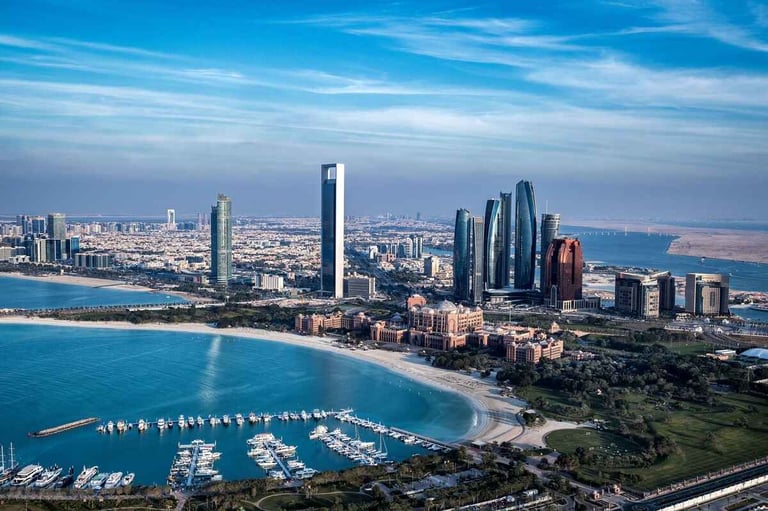COVID-19 turned out to be a blessing in disguise for the UAE and the region’s insurance sector, as insurers were forced to undergo a rapid transformation.
From demographic changes to rapidly evolving customer needs and expectations, insurers took the opportunity to rethink their long-term strategies, as notions of trust, and societal purpose played a greater role in the industry than ever before, in addition to the urgent need to embark on the digital transformation.
In the UAE, the market is expected to continue growing, driven by the country’s economic development and increasing awareness of the importance of insurance. Statista expects the insurance sector to reach a market size of $9.64 billion in 2025.
Non-life insurance dominates the local market with a projected market volume of $5.81 billion in 2025. The gross written premium is expected to show an annual growth rate of 2.06 percent, resulting in a market volume of $10.46 billion by 2029.
Market structure and segmentation
The UAE insurance sector is composed of insurance companies, insurance brokers, insurance agents, TPA Companies (Health Insurance Third Party Administrator), surveyors and loss adjusters, insurance consultants, and other players.
Insurance companies are the main players in the market, offering a range of insurance products to individuals and businesses. Insurance companies in the UAE include national insurance companies, foreign insurance companies and Takaful insurance companies.
They offer several types of insurance including life insurance, health insurance, property insurance, and liability insurance.
Meanwhile, insurance brokers in the UAE independently intermediate in insurance operations between an insurance seeker on the one hand, and any insurance company, on the other. In return, they receive a commission from the insurance companies for their efforts.
On the other hand, insurance consultants are the companies and individuals who study the insurance coverage needs of their customers and provide advice with the appropriate insurance coverage, assist in the preparation of insurance requisites, and receive remunerations from their customers for their efforts.

Trends and insights
The total profits of the UAE’s insurance sector amounted to $680.6 million in 2023, compared to $533.6 million in 2022. This increase was mainly driven by an increase in the net investment income of the insurance sector in 2023.
In its Annual Statistical Report for the Insurance Sector of the UAE 2023, the central bank revealed that the total number of written insurance policies for all types of insurance within the UAE increased to 14.6 million policies in 2023, compared to 8.4 million policies in 2022.
This increase was mainly due to a higher number of property and liability insurance policies, especially in Involuntary Loss of Employment Insurances policies in 2023.
The emirate of Dubai accounted for the largest share with 59.9 percent. Abu Dhabi’s share reached 21 percent, Ras Al Khaimah 6.6 percent, Sharjah 4.58 percent, Fujairah 1 percent, and Ajman 0.5 percent. Policies written outside the UAE accounted for approximately 6.4 percent.
2024 insights
During the first quarter of 2024, the UAE insurance sector continued to grow. The number of licensed insurance companies remained at 60, comprising 23 traditional and 10 takaful national companies, and 27 foreign companies. The number of insurance-related professions increased to 500.
Data from the Central Bank of the UAE revealed that gross written premiums increased by 18.5 percent annually in Q1 2024 to $5.74 billion, mostly due to a rise in property and liability insurance premiums by 24.6 percent.
Health insurance premiums rose by 15.1 percent and the insurance of persons and fund accumulation premiums by 15 percent, resulting primarily from a hike in group and individual life insurance premiums.
During the first six months of 2024, the gross written premiums increased by 31.2 percent to $9.72 billion, mostly due to an increase in property and liability insurance premiums by 39.4 percent, health insurance premiums by 30.7 percent, and the insurance of persons and fund accumulation premiums by 9.1 percent, and this growth resulted primarily from an increase in group and individual life insurance premiums.
Strong economic growth to support market expansion in 2025
Data and analytics company GlobalData said the general insurance industry in the UAE is expected to grow by 6 percent in 2024, supported by personal accident and health, motor and property insurance lines that are collectively expected to account for over 85 percent share of the general insurance premiums in 2024.
The UAE witnessed a slower economic growth of 3 percent in 2023 compared to 7.9 percent growth in 2022, due to cuts in oil production and the deceleration of non-oil sectors.
With economic growth levels expected to reach 5 percent in 2025, the sector will continue to see strong growth.

Regulatory environment
The Central Bank of the UAE supervises and regulates the insurance sector, following the merger of the Insurance Authority into CBUAE under Decretal Federal Law No. 25 of 2020.
Accordingly, all rules, decisions, circulars and regulations issued by the former ‘Insurance Authority’ under the provisions of the Federal Law no. 6 of 2007 will continue to apply to all licensed institutions and activities until they are replaced by CBUAE.
Foreign insurance company regulations
Foreign insurance companies can apply to practice in the UAE through either a branch office or an insurance agent.
To obtain a license, the paid-up capital of an insurance company must not be less than AED100 million. In addition, the company shall be required to place a bank deposit equal to AED6 million in the case of practicing property and liability insurance and AED4 million in the case of practicing personal insurance and funds–building operations.
Regulations for insurance brokers
The central bank also regulates the work of brokers in the UAE. The most important conditions for licensing insurance brokers include:
- Ownership of UAE nationals in the capital must not be less than 51 percent.
- The company’s paid-up capital must not be less that AED3 million.
- Providing a bank guarantee of value AED3 million, issued by one of the licensed banks operating in the UAE, for the Head Office, and a bank guarantee of value AED1 million for branches.
Insurance coverage and claims
The UAE insurance sector plays a vital role in safeguarding individuals and businesses from unforeseen financial burdens by offering various types of coverage, including health, motor, property and life insurance.
Whether it’s an accident, illness or property damage, insurance policies provide a safety net that ensures stability and financial security in times of crisis. A crucial component of the insurance process is the claims procedure, which determines how efficiently policyholders receive compensation for their losses.
Insurers in the UAE prioritize a smooth and transparent claims experience, offering dedicated customer support and digital platforms to streamline the process. Timely claims processing enhances trust in the insurance sector, ensuring that individuals and businesses can quickly recover from financial setbacks.
Read: Middle East private medical insurance costs to rise 12 percent by 2025
Competitive landscape
The UAE insurance sector is highly competitive, with numerous local and international insurers seeking a market share. This dynamic environment encourages innovation and better offerings for consumers, as companies strive to differentiate themselves through unique products, customer-centric services and competitive pricing.
To stay ahead, insurance companies compete on factors such as price, coverage and customer service. Many insurers have introduced exclusive premium membership programs, offering additional benefits and perks.
Additionally, the UAE insurance sector is witnessing a surge in online insurance platforms, transforming how policies are bought and managed. Digitalization has made it easier for consumers to compare plans, get instant quotes, and purchase policies within minutes.








